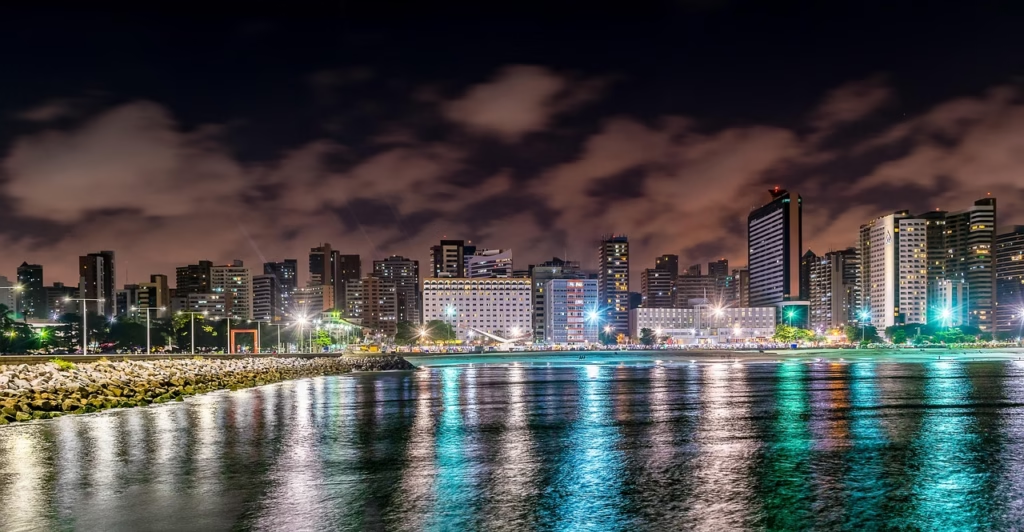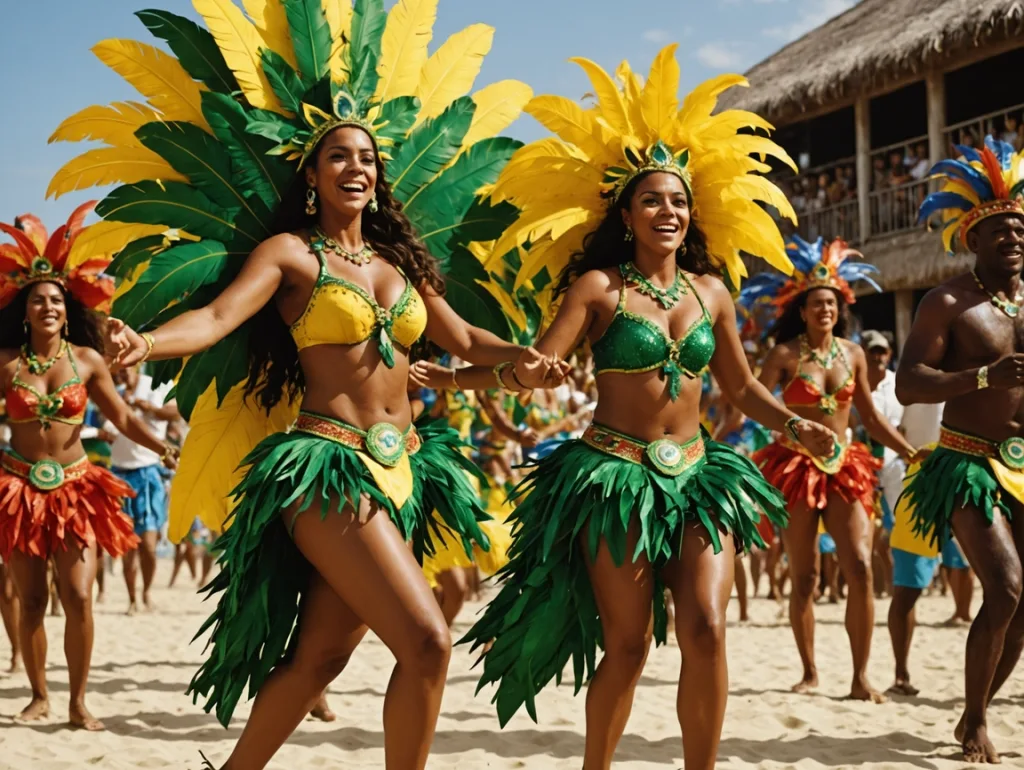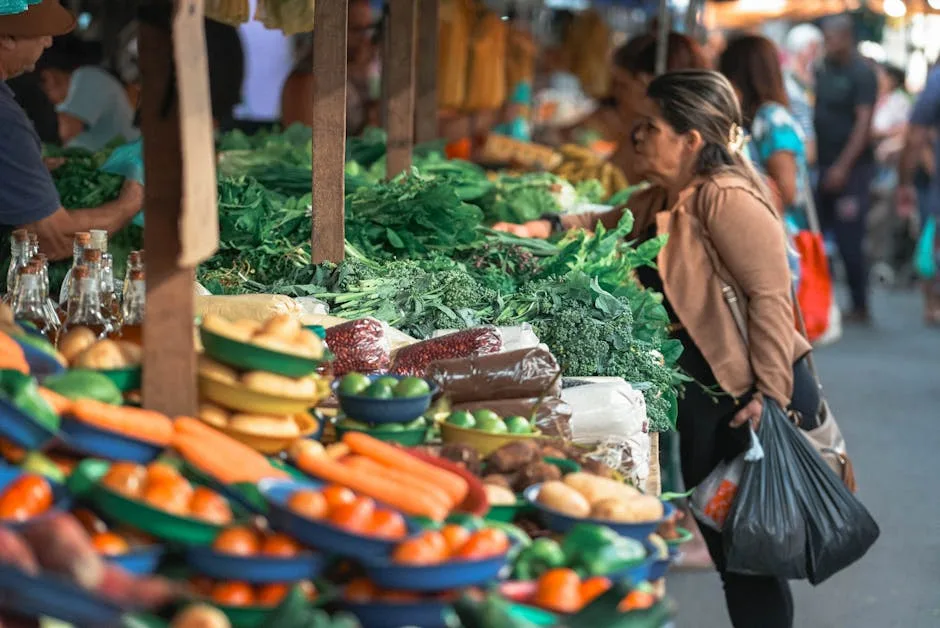The Brazilian Northeast is a vibrant region that offers a captivating blend of cultural diversity, stunning geography, and profound historical significance. Stretching along the northeastern coast of Brazil, this area is defined by its unique combination of urban and rural landscapes, each contributing its distinct characteristics to the overarching identity of the region. Major cities such as Salvador, Recife, and Fortaleza stand in stark contrast to the serene countryside, where traditional ways of life endure, illustrating the rich tapestry of local customs and practices.
The geographical features of the Brazilian Northeast are equally diverse. The region boasts an array of landscapes, including coastal areas adorned with pristine beaches, arid backlands (known as “sertão”), and lush river valleys. These varied environments not only support a rich biodiversity but also play a critical role in the livelihoods of those who inhabit the region. The climate ranges from tropical in the coastal areas to semi-arid in the interior, resulting in distinct local cultures that adapt to the climatic conditions. This climatic variation influences agricultural practices, cuisine, and even local festivities, making the cultural experience distinct across various areas.
Top Destinations in the Brazilian Northeast
The Brazilian Northeast is a vibrant region rich in history, culture, and stunning natural landscapes. Several destinations stand out as must-visit locations for travelers seeking to experience the unique charm of this area. Among these, Salvador, Recife, Olinda, and Jericoacoara are particularly notable.
Salvador, the capital of Bahia, is famous for its colonial architecture and Afro-Brazilian culture. Visitors can explore the historic Pelourinho district, known for its colorful buildings and cobblestone streets, where cultural events and festivals frequently occur. The city is also home to iconic landmarks such as the Church of Bonfim and the Elevador Lacerda, which offers panoramic views of the city and the bay.
Moving on to Recife, the capital of Pernambuco, you will find a blend of modernity and tradition. The city is renowned for its rich cultural scene, which includes museums, theaters, and the popular carnival. The nearby town of Olinda, a UNESCO World Heritage site, is celebrated for its baroque churches and vibrant artistic community. Both cities feature beautiful beaches, such as Boa Viagem, which attract sun-seekers and offer numerous water sports.
Lastly, Jericoacoara is a paradise for nature lovers and adventure enthusiasts. This remote beach destination is framed by stunning sand dunes, lagoons, and vast stretches of coastline. The national park surrounding Jericoacoara offers hiking trails and opportunities for windsurfing and kitesurfing, appealing to those seeking outdoor activities in a breathtaking setting.
Each of these destinations is steeped in history, offering unique attractions that cater to a wide range of interests. Whether you are drawn to Salvador’s cultural richness, Recife’s artistic energy, Olinda’s picturesque charm, or Jericoacoara’s natural beauty, the Brazilian Northeast provides a diverse array of experiences for any traveler. Exploring these notable locations will ensure a comprehensive journey through one of Brazil’s most captivating regions.
Culinary Delights of the Northeast
The Brazilian Northeast is renowned for its vibrant and diverse gastronomy, which is deeply rooted in indigenous, African, and Portuguese influences. This rich culinary heritage results in a tapestry of flavors, textures, and colors that defines the region’s unique identity. Among the must-try dishes is acarajé, a savory delicacy made from black-eyed peas, deep-fried into a doughnut shape, and typically filled with spicy shrimp, vatapá, and caruru. This dish epitomizes the fusion of flavors that characterizes Northeastern cuisine.
Another iconic dish is moqueca, a traditional seafood stew that boasts tantalizing ingredients such as coconut milk, dendê oil, and fresh herbs. The dish varies by location, reflecting local traditions, with two popular versions originating from Bahia and Espírito Santo. Bahian moqueca has a robust flavor, adorned with spices and accompanied by rice, while the Espírito Santo variant presents a milder taste, emphasized by the use of more vegetables. Both versions exemplify the commitment to fresh, local ingredients that is a hallmark of the region’s cooking.
Sweets also hold an important place in the northeastern diet, with sobremesa de passa featuring prominently. This sweet dish, made from dried fruits and coconut, encapsulates the celebratory spirit of Brazilian gatherings. Food in the Northeast is not merely sustenance; it plays a critical role in social events, family reunions, and various festivals throughout the year.
Exploring local markets and street food vendors offers travelers an authentic taste of the Northeast. Markets such as the Mercado Central in Fortaleza are treasure troves of regional products, where fresh produce, artisanal cheeses, and local meats abound. Recommendations for restaurants like O Veleiro in Salvador and O Barco in Recife ensure that culinary enthusiasts can experience delectable dishes in charming settings. Savoring the culinary delights of the Brazilian Northeast is essential for appreciating this culturally rich region fully.
Travel Tips and Cultural Etiquette
When planning a trip to the Brazilian Northeast, understanding the region’s travel logistics and cultural norms is essential for a smooth and enjoyable experience. Firstly, transportation options vary from one location to another. Major cities such as Salvador, Recife, and Fortaleza boast well-connected public transport systems, including buses and taxis. However, for exploring the more rural areas and hidden gems, renting a car may be advisable. Additionally, domestic flights are common for longer routes, as they save considerable travel time.
Safety is another crucial aspect to consider. While the Brazilian Northeast is largely safe for tourists, it is wise to remain vigilant, particularly in crowded spaces. Avoid displaying valuables and seek accommodation in well-reviewed areas. Being aware of your surroundings and using common sense will enhance your safety. For those interested in exploring local culture, plan your visit to coincide with regional festivals, such as Carnaval or Festas Juninas, which showcase the vibrancy and diversity of the Northeast’s traditions.
Understanding and respecting local customs and practices will significantly enrich your experience. Greetings in Brazil often involve a warm handshake or a kiss on the cheek among acquaintances. Dressing appropriately is also important; beachwear is suitable for the coast but may not be permissible in inland towns or religious sites. It’s polite to inquire before taking photos of people, as some might prefer not to be captured. Additionally, embracing the local cuisine and dining etiquette can further bridge cultural gaps—sampling traditional dishes like acarajé or carne de sol at local establishments is highly recommended, and tipping is generally appreciated but not obligatory.
By being mindful of these travel tips and cultural etiquette, visitors to the Brazilian Northeast can foster respectful interactions and create memorable experiences within this captivating region.





